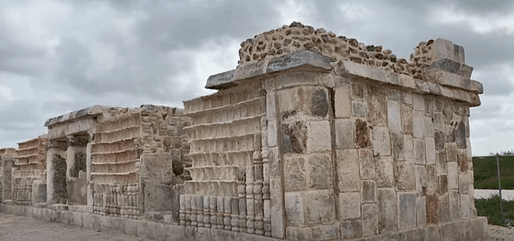

Archaeologists of the Instituto Nacional de Antropología e Historia (Iphan, the Mexican federal bureau that oversees cultural heritage projects) have unearthed a remarkably well-preserved Maya city in the Yucatán peninsula near Merida while examining a construction site for archaeological artefacts. — The Art Newspaper
The site is called Xiol, which is believed to have been occupied by more than 4,000 people between 600 and 900 AD. It consists of nearly 100 structures with features related to the Mayan Puuc style, an architecture characterized by carefully-cut veneer stones set onto a concrete core, with façades decorated with intricate stone mosaics and geometric elements.
According to The Art Newspaper, similar examples of Puuc architecture have not been discovered in this region of the Yucatán. The structures are thought to have served as palaces and ritual sites. The archaeologists also discovered a cenote, freshwater underground pits, carved stone heads, ceramics with religious symbols, burial grounds with various objects, and marine artifacts.
Video via Global News on YouTube.
The discovery of Xiol, along with other archaeological sites in the region, can be attributed to increased development in the Yucatán. A controversial multi-billion dollar train line called the Maya Train is currently being constructed that will connect various ancient sites around the peninsula to one another. Xiol, in particular, is said to have been discovered during the construction of an industrial park. The site is expected to open to the public later this year.
No Comments
Block this user
Are you sure you want to block this user and hide all related comments throughout the site?
Archinect
This is your first comment on Archinect. Your comment will be visible once approved.